Why We Need CCSS Math
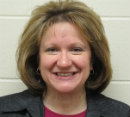
Kathy serves on the Illinois Mathematical Model Curriculum writing team and is a member of the Illinois Educator Leader Cadre.Through the Cadre, she works with the Common Core consortium group PARCC to develop items for CCSS math assessments. We thought Kathy was a good choice to present the pro-Common Core viewpoint, with a focus on mathematics.
_______
OMG! The Math Common Core Standards Didn’t Go Away!
by Kathy Felt
In education, it seems that a new “this is the best thing ever” reform movement comes along every couple of years. Educators are wise to this. If the current one doesn’t excite you, just wait a little while and it will likely be replaced by something else.
Such was the belief of many middle grades educators when they heard about the Common Core State Standards (CCSS) for ELA and Mathematics. But these haven’t gone away, and the time has come to implement them in the classroom. So what do we do now?
Why do we need the CCSS?
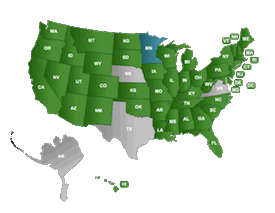
I want to zero in on the math standards because that’s what I teach and that’s where I’ve been involved in planning for Common Core implementation and assessment.
Significantly, the CCSS authors gave us not only the mathematics content standards, but mathematical practice standards as well. Together, these standards tell us what and how we should be teaching in our classrooms. The developers took what was deemed necessary for success in college and careers beyond high school and “back-mapped” those skills into the standards all the way down through the K-12 mathematics curriculum to primary school.
Our new common assessments, being developed on a parallel track, will offer vital information on our students’ progress throughout their education, with the ultimate goal of being ready for college and careers and possessing the mathematical skills and knowledge necessary to support themselves and their families.
How is this different than NCLB?
Under the No Child Left Behind law, the focus in K-12 public education quickly became about raising test scores. And it didn’t take long to realize that mathematics education in this country was not working well. NAEP and other data revealed that less than half of the student population in this country was minimally proficient in mathematics, and it became clear things needed to change.
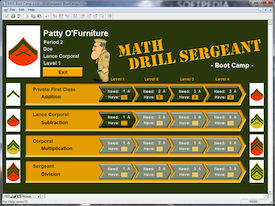
The mathematics we were teaching was also boring, mundane, and had little relevance to our students.
Why? Mathematics teachers, perhaps more than other curricular areas, tended to teach as we were taught. Traditionally, our instruction had been based in showing and telling our students how to do the procedures—not allowing our students to productively struggle to gain the deep understandings necessary to thrive in a 21st century world.
Students today are different than in years past. They have access to information 24/7 – often with technology in their pockets. Their world moves faster and constantly stimulates them in ways unheard of in the past. We need to effectively engage them and use applicable technology in the classroom so they will be excited to learn, know when and how to apply their skills, and understand why the mathematics is important in their high-tech world. When students are engaged in their learning, they like math more and experience greater achievement.
How do we make it work?
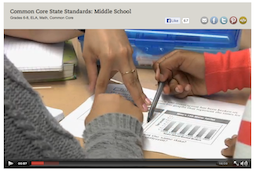
Because the CCSS is firmly rooted in good teaching practice, we need to have the confidence that if we master new practices, our students will achieve much more. We can’t do it by isolating ourselves — by going into our math classrooms and closing the door. But we can do it together, by collaborating with our peers.
The creators of the Common Core standards and methods do not imagine that we will do this alone. The power of these standards is that they are uniform throughout our states and we can collaborate not only with our local peers, but with math teachers in other states who are working to achieve the same standards.
Together, we can design and share effective and engaging lessons. We can utilize tools and strategies developed by our colleagues throughout the country, confident that if they help their students gain true mathematical proficiency, they will also work for us. We can all get better together.
How new assessments will help
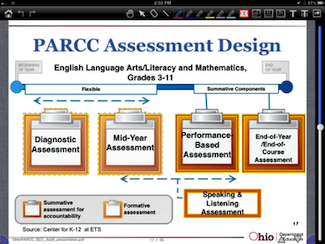
The assessments are also directly linked to best teaching practices. The released items not only tell me what is on THE TEST and in the standards, they show what high quality teaching, mathematical knowledge, and student understanding look like in this new environment. They offer all of this in a real world context and make this process applicable to the world in which my students live.
Bottom line: The Common Core is asking for monumental changes in our mathematics classrooms – perhaps the greatest changes of our careers. But, it is the right thing to do. Our students are worth the considerable effort it will take to achieve this.
Resources that can support new practices
There is no shortage of Common Core math resources available for use in the classroom. The difficult part is determining which resources are most beneficial for individual situations.
Let’s start with an obvious question: What ARE these new practices we need to adopt? In her Dec-Jan 2013 Educational Leadership article, “Go Figure: Math & the Common Core,” noted math teacher/author Marilyn Burns describes what she thinks needs to change, using an example from her own dinner table. And in this 15-minute video at the Teaching Channel, you’ll see how two teachers in New York City are shifting their math instruction in synch with the new standards. Also, this collection at Achieve the Core examines the shifts in math teaching practice and includes a variety of print and video resources.
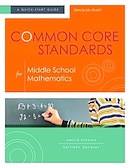
If electronic resources are more your preference, I offer several of my favorites:
• The Common Core Conversation (www.commoncoreconversation.com ) My very favorite “go-to” resource. This is a meta-site, which means it has a plethora of resources. On the homepage, scroll down on the left to select Math. You’ll find about 100 high quality sites offering reputable classroom resources for Common Core implementation. There’s also a link at the top of the site which leads you to state-by-state Common Core resources, including lessons, scopes and sequences, modules, and activities. Explore your state. Explore other states. You will use this daily. It’s proof positive that we are all in this together.
• Teaching Channel (www.teachingchannel.org ) offers powerful videos clearly demonstrating quality teaching and strategies, both general and math-specific, as well as impressive lesson plans.
• National Council of Teachers of Mathematics (www.nctm.org) which should, arguably, be an important stop for any math teacher.
• Common Core State Initiative (www.corestandards.org ) offers official information, the standards, and resources.
The Common Core Standards are here to stay. As a mathematics teacher deeply involved in CCSS development and implementation, I’m convinced that is a very good thing.
This national initiative will demand high quality teaching. It offers us a set of rigorous, coherent math standards that will prepare our students for college and careers. It’s up to us to step up and show that — given the right professional development and support — we can teach mathematics in deep and engaging ways.
If you have been slow to jump on this bandwagon, come join us now. Armed with these tools, we really will be able to make a difference in the education of our students. They are so worth the effort!


































